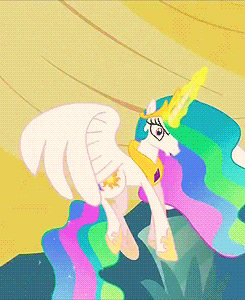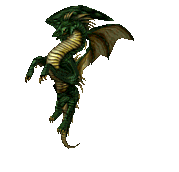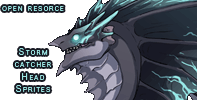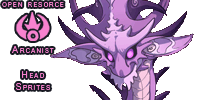The new lorebook is causing me some headaches. It's mentioned several times, quite clearly, that it's harder for dragons to fly in still air. I've seen some people dismiss these statements by saying the Wind dragons were just shocked and grieving, and they certainly were, but there is definitely more going on here. For example:
"Flying through stagnant air was possible for most dragons, if unpleasant."
This one just clearly says that for most dragons, flying in stagnant air is unpleasant. This could just be referring to Wind dragons, but I doubt it. Edger is a courier, so he has a more global view of the world than most dragons. If he meant just wind dragons, don't you think he could have specified that? Also, as you see in later quotes, Edger also has trouble flying in still air and he's not a Wind dragon as far as I'm aware.
"Flying distances through a windless sky was risky even unladen, and a walking courier was vulnerable to dangers such as land-faring beastclans, large predators, and even thievery from his fellows."
This particular quote can also be interpreted to mean that long-distance flight is very hard without riding the winds. Still, more proof that dragons need wind to fly efficiently.
"“Hey kid! You’ve got some strong wings to be staying aloft in this weather!” Edgar shouted, waving to the youth."
You need to be strong to fly in stagnant air. The opposite of what you would expect.
"Spreading his wings, the courier prepared to take off, but stopped abruptly. “Right. I should get a running start.” He waddled to the other end of the platform, positioning himself on all fours. Taking a deep breath, Edgar rushed across the deck, launching himself off the edge. ..... "Edgar gave in to the simple joy of flight, attempting to soar in sequence his partner, but quickly grew tired flapping his wings without the lift of the wind to bolster him. " ..... "Edgar dived off the small basket into the stagnant air, ignoring the protest of the muscles in his back and wings. "
Again, it's not just the Wind Dragons that are having trouble; Edger struggles as well.
Obviously, in the real world, it's harder for things to fly in heavy winds unless it's a tailwind.
Now, theories. I have a couple ideas.
Theory #1: Dragons are terrible flyers.
Dragons are just very weak flyers that cannot fly very well without a tail-wind or thermal updraft (as in Temper, Temper). On the Windswept Plateau world map page, it states that Wind dragons are always traveling "guided only by the direction of the wind and a sense of exploration." Do they choose to follow the wind current because they want too, or because it's the only way to maintain sustained flight? After all, dragons have pretty tiny wings in comparison to their body size.
Theory #2: Magic
Magic plays a huge role in the Flight Rising world. Perhaps dragons need some kind of passive magic to fly, especially considering their wingspan/body ratio. Maybe the wind is just the physical manifestation of wind magic in the air, and when the wind goes still, the ambient "flying" magic is considerably weakened, making it harder for dragons to fly.
What do you guys think?
The new lorebook is causing me some headaches. It's mentioned several times, quite clearly, that it's harder for dragons to fly in still air. I've seen some people dismiss these statements by saying the Wind dragons were just shocked and grieving, and they certainly were, but there is definitely more going on here. For example:
"Flying through stagnant air was possible for most dragons, if unpleasant."
This one just clearly says that for most dragons, flying in stagnant air is unpleasant. This could just be referring to Wind dragons, but I doubt it. Edger is a courier, so he has a more global view of the world than most dragons. If he meant just wind dragons, don't you think he could have specified that? Also, as you see in later quotes, Edger also has trouble flying in still air and he's not a Wind dragon as far as I'm aware.
"Flying distances through a windless sky was risky even unladen, and a walking courier was vulnerable to dangers such as land-faring beastclans, large predators, and even thievery from his fellows."
This particular quote can also be interpreted to mean that long-distance flight is very hard without riding the winds. Still, more proof that dragons need wind to fly efficiently.
"“Hey kid! You’ve got some strong wings to be staying aloft in this weather!” Edgar shouted, waving to the youth."
You need to be strong to fly in stagnant air. The opposite of what you would expect.
"Spreading his wings, the courier prepared to take off, but stopped abruptly. “Right. I should get a running start.” He waddled to the other end of the platform, positioning himself on all fours. Taking a deep breath, Edgar rushed across the deck, launching himself off the edge. ..... "Edgar gave in to the simple joy of flight, attempting to soar in sequence his partner, but quickly grew tired flapping his wings without the lift of the wind to bolster him. " ..... "Edgar dived off the small basket into the stagnant air, ignoring the protest of the muscles in his back and wings. "
Again, it's not just the Wind Dragons that are having trouble; Edger struggles as well.
Obviously, in the real world, it's harder for things to fly in heavy winds unless it's a tailwind.
Now, theories. I have a couple ideas.
Theory #1: Dragons are terrible flyers.
Dragons are just very weak flyers that cannot fly very well without a tail-wind or thermal updraft (as in Temper, Temper). On the Windswept Plateau world map page, it states that Wind dragons are always traveling "guided only by the direction of the wind and a sense of exploration." Do they choose to follow the wind current because they want too, or because it's the only way to maintain sustained flight? After all, dragons have pretty tiny wings in comparison to their body size.
Theory #2: Magic
Magic plays a huge role in the Flight Rising world. Perhaps dragons need some kind of passive magic to fly, especially considering their wingspan/body ratio. Maybe the wind is just the physical manifestation of wind magic in the air, and when the wind goes still, the ambient "flying" magic is considerably weakened, making it harder for dragons to fly.
What do you guys think?
Keyraven "Key"
FR + 1


I think it goes with most bird types, that it takes a lot more effort to fly in dead air than with a wind. Constant flapping vs gliding for some rest.
Some dragon species are canonically not fantastic fliers, for a variety of reasons:
Fae - require continuous food to fly significant distances
Mirrors - only capable of short-duration flights before tiring
Snappers - flight only via magic
Bogsneaks only reference their ability to sprint, and guardians are heavy and heavily armoured which would make flying significant distances a lot harder. Spiral lore could also imply short-distance flight only as well. Skydancers are acrobatic in the air, which usually precludes long-distance flying in earth creatures.
On earth there are long-distance fliers, which are primarily scavengers or seabird that do not rely on agility or speed to catch food. There's speed hunters, which fly for short periods of time, and agility hunters which do the same.
Pretty much everything other than scavenger and migratory birds spend very little time in the air in a single interval, and both of those rely heavily on winds and thermals to do so.
tl;dr Magic probably helps them physically fly at all, but we probably expect too much broad flight capability from creatures that seem to be designed around particular ecological niches.
Some dragon species are canonically not fantastic fliers, for a variety of reasons:
Fae - require continuous food to fly significant distances
Mirrors - only capable of short-duration flights before tiring
Snappers - flight only via magic
Bogsneaks only reference their ability to sprint, and guardians are heavy and heavily armoured which would make flying significant distances a lot harder. Spiral lore could also imply short-distance flight only as well. Skydancers are acrobatic in the air, which usually precludes long-distance flying in earth creatures.
On earth there are long-distance fliers, which are primarily scavengers or seabird that do not rely on agility or speed to catch food. There's speed hunters, which fly for short periods of time, and agility hunters which do the same.
Pretty much everything other than scavenger and migratory birds spend very little time in the air in a single interval, and both of those rely heavily on winds and thermals to do so.
tl;dr Magic probably helps them physically fly at all, but we probably expect too much broad flight capability from creatures that seem to be designed around particular ecological niches.
Birds typically use air currents to fly, otherwise it would be exhausting. A dragon's sheer size and weight would make this even more difficult without strong air currents and updrafts.
Birds typically use air currents to fly, otherwise it would be exhausting. A dragon's sheer size and weight would make this even more difficult without strong air currents and updrafts.
Even without wind, air has a resistance. So, if it's tiring for birds, imagine for dragons who are hundred of times bigger!
Even without wind, air has a resistance. So, if it's tiring for birds, imagine for dragons who are hundred of times bigger!
If there's no wind, a flying animal would have to continue flapping its wings to stay aloft. This is tiring, since they have to compensate for drag forces and gravity. Wind currents makes it easier for flying creatures to fly both long distance and short flights since they can glide on the current and don't have to flap their wings.
This is probably the same for dragons, as they probably have the same way of flight as birds and bats. Dragons weigh a lot more than a bird though, and that weight may put an added strain on their wing muscles.
Its probably natural that he finds it hard to fly in still air.
If there's no wind, a flying animal would have to continue flapping its wings to stay aloft. This is tiring, since they have to compensate for drag forces and gravity. Wind currents makes it easier for flying creatures to fly both long distance and short flights since they can glide on the current and don't have to flap their wings.
This is probably the same for dragons, as they probably have the same way of flight as birds and bats. Dragons weigh a lot more than a bird though, and that weight may put an added strain on their wing muscles.
Its probably natural that he finds it hard to fly in still air.
@Kamme
i am just going to throw my two cents into this
dragons are [b]very heavy[/b] and even birds use air curents to fly around. How do you think birds and other bugs would know how to go from north to south all the time?
[quote]Obviously, in the real world, it's harder for things to fly in heavy winds unless it's a tailwind.
[/quote]
this is true.
and honestly? I think you are ehm……… making it too complicated.
[quote]Tactics
Spiral dragons fight their battles with quick-cast spells. They rely on their natural agility to protect them from oncoming attacks. Their erratic, unpredictable flight patterns make them a difficult target to hit. If a Spiral dragon injures any one of its six wings, the fight is over.
[/quote]
Dragons cant be bad flyers otherwise how can some breeds rely souly on flying and their agility to stay alive in a fight?
I think the best solution to this is occam's razor it.
[b]"Edgar dived off the small basket into the stagnant air, ignoring the protest of the muscles in his back and wings. " [/b]
It would take a lot of muscle to constently fly in the same place.
[img]https://78.media.tumblr.com/f52a6f87446dc72242e3d3b15fefabf9/tumblr_od9bf5Oyl91vf41heo1_500.gif[/img]
[img]https://78.media.tumblr.com/6007a77df9bb70f3e16eeeaee37068ed/tumblr_od9bf5Oyl91vf41heo3_540.gif[/img]
[img]http://78.media.tumblr.com/2a497831e0ad4edce9ddba0e55f07641/tumblr_nicrm8GLjq1r922azo1_500.gif[/img]
[img]https://78.media.tumblr.com/e7707cc8e3d39939459ab2eb9bc6f5b7/tumblr_inline_onmibxzYPa1tkatao_500.gif[/img]
In anime and other fourms of animation aftist are gilty of just having wings be there to imply a character is flying . Wings are used for a short hand for us to just pretend they are flapping in place!
[img]http://pa1.narvii.com/6150/0e0659167bd9664f626203c90a51a34845a2d367_00.gif[/img]
or sometimes they don't even show it at all.
It is because of that I suspect people forget just how much mussle it takes to constently keep doing an activity.
If a bird just ever held it's wings in place in still air you know what'd happen?
[img]https://im-01.gifer.com/G9Tm.gif[/img]
this'd happen.
so in order to fly you need to flap your wings. And flapping wings takes [b]WORK[/b]
When I read
[b]"Edgar dived off the small basket into the stagnant air, ignoring the protest of the muscles in his back and wings. " [/b]
I was instantly reminded of when i played golf and my second year of doing it in highschool. After not working out and going back into it [b]my body felt it[/b]
if you don't constently use it you LOSE IT.
very rarely do we get animaton like this often
[img]https://vignette.wikia.nocookie.net/mlp/images/d/d0/FANMADE_Rainbow_flying.gif[/img]
[img]http://www.brendanbody.co.uk/flight_tutorial/images/breaking_joints_bird.jpg[/img]
[img]https://i.pinimg.com/originals/c5/36/30/c536304212838377f9ddcc016b6a8ee3.png[/img]
it's complicated it's messy
no one want's to do it.
so we're constenly exsposed to very meek flying animations in life
and rarely do we see just how damn crazy life is.
[img]http://moziru.com/images/drawn-wings-human-13.jpg[/img]
Bats SWIM through the air.
[img]https://media1.tenor.com/images/cc4d1a205f6d0247b32300e16f3cacc3/tenor.gif[/img]
[img]https://media2.giphy.com/media/AjVotAG3feS6k/giphy.gif[/img]
Look how much effort it takes to hover.
[img]http://www.netanimations.net/6DF_flying-dragon-animated-image.gif[/img]
imagen a guardian trying to hover in place, what you imagen is often protrayed and thats this guy up there. nice and slow
in order to stay flying in one spot
the dragon would most likely would have to do THIS insted.
[img]https://i.imgur.com/TIcXZpm.gif[/img]
And this is just being generus
AND THATS GOING TO BE VERY TIRING.
[b]You are forgetting that air is alot like water. And we all swim through it.[/b]
So yeah magic does play a role, and maybe they do some crazy vodo to keep thsmselves floating. But never forget that it takes [b]work[/b] to have anything happen in reality.
[img]http://geekologie.com/2016/08/16/synchronized-wind-tunnel-dancing.gif[/img]
so happy falling, and happy theorising.
[url=http://www1.flightrising.com/forums/frd/2380813/1#post_2380813]Lore buddy[/url] ping list: [b](add me as a friend and comment on my profile page to be added!)[/b]
[size=1][size=1][size=1]@ArtsyDragon7, @Kawootie, @GlitterDCMarvel, @WhySoDelirious, @PoorLifeChoices, @Amyatzu, @JadeMagic, @CrystalRush, @Leopardmask, @violalore, @bowserslave, @Ellapinky, @JumpScared, @JadeFlame, @Duskflame, @TheElfDruid,@Rinwood,@DiamondNoodles,@3idolon,@Kaibutsu,@DarkwingDove, @ColoradoBlues @ClockworkEclipse, @SleepyChipmunk @Sabriel415, @DarkVSO,
@Cheshly, @WhiteDiamond ,@RingsofSaturn, @MagicSpyglass,@Rocwylde, @Artificiary,@ILUVDRAGONS, @throwaway181,@L2B,@Kittystar,@riseandshine, @luminousnoble, @Spottedleaves1,@Gaming4Lyfe @MiniDrachin @Katsuokai @AetherDragon @Kano3Shuuya @Caravan @EmeraldJubilee @TheEngineer @Kristan @Inkapede @KitApparently @Dragongirlgirl @girlgirlDragon @JonTargaryen @CassieRose @Chimaerix @Comic1Sans @CrazyRedFire @QuetzalQueen @FlamingSwallow @ookamisoulreaper @HyperionForge @Starglade @GlassJungle @Galaxiel @biochemist @P4810 @CrAZDragon @Skyfire7 @AnacondaMiracle @Kerriganne @Remuta @Cumulus @Aaliyahgemini664 @Geckoe
@Smirch @Nomo2001 @RecursionErr0r @Storey @Scorporius @Kapara @Ragnell @GuidanceOfficer @Espeon5712 @Druddigon @Thace @MrFrenchFrybrows @RicochetRomance @FluffyTundras @CloverGaming @argylion @starryfruit @Eiira @NovaAurora @dinosaur42 @TimeStandStill @browncoatparadox @TropicalDiamonds @Raecat @Cytus @RattleSnakes @SariStar @Kirrandria @clw23 @Hinumi @ThornOfStorm130 @FireStarter007 @Bluwingskitty @SnoringHyena @MurEyeUh @mnkn10 @Dragonartist24 @SpectralRose @Mikann @Namira @Nomo2001 @Cringeworthi @Drakenhart @PastCat @ArtsyDragon7 @Mediumdee @Stanari
@MidnightWatcher @Xalkile @SilverCentaur @Hashira
[/size][/size][/size]
~ ~ ~
temp additions for "lore we learned from Bounty of the Elements"
@duskflower
@
Kamme
i am just going to throw my two cents into this
dragons are
very heavy and even birds use air curents to fly around. How do you think birds and other bugs would know how to go from north to south all the time?
Quote:
Obviously, in the real world, it's harder for things to fly in heavy winds unless it's a tailwind.
this is true.
and honestly? I think you are ehm……… making it too complicated.
Quote:
Tactics
Spiral dragons fight their battles with quick-cast spells. They rely on their natural agility to protect them from oncoming attacks. Their erratic, unpredictable flight patterns make them a difficult target to hit. If a Spiral dragon injures any one of its six wings, the fight is over.
Dragons cant be bad flyers otherwise how can some breeds rely souly on flying and their agility to stay alive in a fight?
I think the best solution to this is occam's razor it.
"Edgar dived off the small basket into the stagnant air, ignoring the protest of the muscles in his back and wings. "
It would take a lot of muscle to constently fly in the same place.




In anime and other fourms of animation aftist are gilty of just having wings be there to imply a character is flying . Wings are used for a short hand for us to just pretend they are flapping in place!

or sometimes they don't even show it at all.
It is because of that I suspect people forget just how much mussle it takes to constently keep doing an activity.
If a bird just ever held it's wings in place in still air you know what'd happen?

this'd happen.
so in order to fly you need to flap your wings. And flapping wings takes
WORK
When I read
"Edgar dived off the small basket into the stagnant air, ignoring the protest of the muscles in his back and wings. "
I was instantly reminded of when i played golf and my second year of doing it in highschool. After not working out and going back into it
my body felt it
if you don't constently use it you LOSE IT.
very rarely do we get animaton like this often



it's complicated it's messy
no one want's to do it.
so we're constenly exsposed to very meek flying animations in life
and rarely do we see just how damn crazy life is.

Bats SWIM through the air.


Look how much effort it takes to hover.

imagen a guardian trying to hover in place, what you imagen is often protrayed and thats this guy up there. nice and slow
in order to stay flying in one spot
the dragon would most likely would have to do THIS insted.

And this is just being generus
AND THATS GOING TO BE VERY TIRING.
You are forgetting that air is alot like water. And we all swim through it.
So yeah magic does play a role, and maybe they do some crazy vodo to keep thsmselves floating. But never forget that it takes
work to have anything happen in reality.

so happy falling, and happy theorising.
Lore buddy ping list:
(add me as a friend and comment on my profile page to be added!)
@ArtsyDragon7, @Kawootie, @GlitterDCMarvel, @WhySoDelirious, @PoorLifeChoices, @Amyatzu, @JadeMagic, @CrystalRush, @Leopardmask, @violalore, @bowserslave, @Ellapinky, @JumpScared, @JadeFlame, @Duskflame, @TheElfDruid,@Rinwood,@DiamondNoodles,@3idolon,@Kaibutsu,@DarkwingDove, @ColoradoBlues @ClockworkEclipse, @SleepyChipmunk @Sabriel415, @DarkVSO,
@Cheshly, @WhiteDiamond ,@RingsofSaturn, @MagicSpyglass,@Rocwylde, @Artificiary,@ILUVDRAGONS, @throwaway181,@L2B,@Kittystar,@riseandshine, @luminousnoble, @Spottedleaves1,@Gaming4Lyfe @MiniDrachin @Katsuokai @AetherDragon @Kano3Shuuya @Caravan @EmeraldJubilee @TheEngineer @Kristan @Inkapede @KitApparently @Dragongirlgirl @girlgirlDragon @JonTargaryen @CassieRose @Chimaerix @Comic1Sans @CrazyRedFire @QuetzalQueen @FlamingSwallow @ookamisoulreaper @HyperionForge @Starglade @GlassJungle @Galaxiel @biochemist @P4810 @CrAZDragon @Skyfire7 @AnacondaMiracle @Kerriganne @Remuta @Cumulus @Aaliyahgemini664 @Geckoe
@Smirch @Nomo2001 @RecursionErr0r @Storey @Scorporius @Kapara @Ragnell @GuidanceOfficer @Espeon5712 @Druddigon @Thace @MrFrenchFrybrows @RicochetRomance @FluffyTundras @CloverGaming @argylion @starryfruit @Eiira @NovaAurora @dinosaur42 @TimeStandStill @browncoatparadox @TropicalDiamonds @Raecat @Cytus @RattleSnakes @SariStar @Kirrandria @clw23 @Hinumi @ThornOfStorm130 @FireStarter007 @Bluwingskitty @SnoringHyena @MurEyeUh @mnkn10 @Dragonartist24 @SpectralRose @Mikann @Namira @Nomo2001 @Cringeworthi @Drakenhart @PastCat @ArtsyDragon7 @Mediumdee @Stanari
@MidnightWatcher @Xalkile @SilverCentaur @Hashira
~ ~ ~
temp additions for "lore we learned from Bounty of the Elements"
@
duskflower
As someone who actually likes birds, kites, and the speculative biology (yes, Wind was my second choice of Flight after Water), wind is hugely important to flying!
So, birds are the most common large flying animal on Earth. You've probably encountered small song birds and pigeons in your day to day life, and you might have noticed that they tend to not fly away if they can just hop. That's because flying is hard work! Take-off especially requires a huge amount of energy if it is from a stand-still, because it is generating enough thrust to lift the entirety of the bird's weight off the ground. Most birds prefer to take off by being high enough that they can just fall forward, essentially, and then open their wings to take advantage of the higher speed to generate forward momentum with much less effort and energy. Some birds can only take off in this fashion due to wing to body ratios and weight distribution. Prehistoric winged creatures especially were probably very notable for this!
People assume that all air is "dead" if there isn't a strong breeze. On ground level, maybe! From kite flying, I've found that once you reach the height of the tree tops (mm, 30+ feet on average where I live?) your kite will stay up with much less effort from you. Once you get up high enough, you begin to hit interference from things like thermals, columns of warm rising air; cooling air that is falling, and all the interactions between the two. Weather happens because the air is in constant movement, being warmed by the sun to rise, then falling as it cools. Both actions displace air already there, forcing it to move. Air is only "dead" if it is there is no movement whatsoever, with no heat or coolness interfering to force movement/provide rising and falling forces. This typically occurs closer to the equator, particularly around the area known as the doldrums. Dead air is nearly impossible to move through, because it requires constant thrust from whatever is flying to continue their movement, and if they choose to glide, they will never hit a thermal to let them easily rise to a higher elevation. Birds already eat near constantly due to the high metabolic demands of flying, and that's flying with the breeze. A bird in dead air is in much more trouble if they don't have a steady source of food and easily available perches.
The trick for birds isn't really getting aloft, although that is tricky- it's staying up that's the trouble. If a bird spends significant amounts of time in the air (vultures, hawks, seagulls, albatross, etc) they have big, wide wings. They aren't made to turn quickly and perform acrobatic stunts because they are literally trying to do as little work as possible while letting the wind carry them. Vultures circle to pinpoint dead food, yes, but also because they have found a thermal! Vultures near where I live adore a quarry nearby, because the exposed stone warms faster than the land around it, thereby creating a perpetual updraft that they can ride. Vultures are terrible fliers, but with updrafts and decent winds they can stay aloft for a very long time. Birds with short stubby wings (hummingbirds) are acrobatic fliers, but they prefer to move from point to point, perch to perch.
If we apply this to dragons, it would make sense that Spirals are more like hummingbirds- their relatively small wing to body ratio can be offset by how quickly their wings beat, as well as having very flexible wings. (Hummingbirds are some of the only birds that can fly backwards! Their wings move in a figure 8 pattern, like a dragonfly's, which gives them unparalleled control in the air.) They are stupid fast in the air, very mobile and graceful, but they have some of the highest energy requirements. (No seriously, hummingbirds are RIDICULOUS, go on wikipedia because good lord. They literally enter a torpor state at night to conserve more energy and can die from weight loss due to oversleeping, ok.) Edgar is likely more like a hawk or other broadwing; he can easily travel long distances, but is reliant on winds and thermals to keep aloft. Even if the wind is against you, you can use wind shear and various tricks to still make it work for you, although a true tailwind is indeed the easiest to fly with, and a headwind the hardest to fly against.
Magic-wise, the lore so far seems to imply that large scale natural phenomena (the Crystalspire Reaches growth, the appearance of some deep element in lava) are highly connected to magic, and quite possibly to the magic of the deities themselves (the forge dragons call the new element part of the Flameforgers heart blood). For the Spiral Crescendo to flat out stop? Means that something is INCREDIBLY wrong with the magic in the area. Fae are noted to be adept at pulling magic from their environment to work with, meaning that other dragons can use this skill. Otherwise, they are reliant on internal resources, which, combined with the strain of flight, means that flying in dead air in an area that should be full of potent magical energies is seriously bad juju. It would be very easy to overextend, and even if you were careful, you would be burning through a huge amount of internal energy and resources. Better to stay put and hope the winds come back. (Side note: oh god a reversed spiral, that's going to muck up the weather all over the realm do you know how tetchy that stuff is)
So, uh, long post over? :D
As someone who actually likes birds, kites, and the speculative biology (yes, Wind was my second choice of Flight after Water), wind is hugely important to flying!
So, birds are the most common large flying animal on Earth. You've probably encountered small song birds and pigeons in your day to day life, and you might have noticed that they tend to not fly away if they can just hop. That's because flying is hard work! Take-off especially requires a huge amount of energy if it is from a stand-still, because it is generating enough thrust to lift the entirety of the bird's weight off the ground. Most birds prefer to take off by being high enough that they can just fall forward, essentially, and then open their wings to take advantage of the higher speed to generate forward momentum with much less effort and energy. Some birds can only take off in this fashion due to wing to body ratios and weight distribution. Prehistoric winged creatures especially were probably very notable for this!
People assume that all air is "dead" if there isn't a strong breeze. On ground level, maybe! From kite flying, I've found that once you reach the height of the tree tops (mm, 30+ feet on average where I live?) your kite will stay up with much less effort from you. Once you get up high enough, you begin to hit interference from things like thermals, columns of warm rising air; cooling air that is falling, and all the interactions between the two. Weather happens because the air is in constant movement, being warmed by the sun to rise, then falling as it cools. Both actions displace air already there, forcing it to move. Air is only "dead" if it is there is no movement whatsoever, with no heat or coolness interfering to force movement/provide rising and falling forces. This typically occurs closer to the equator, particularly around the area known as the doldrums. Dead air is nearly impossible to move through, because it requires constant thrust from whatever is flying to continue their movement, and if they choose to glide, they will never hit a thermal to let them easily rise to a higher elevation. Birds already eat near constantly due to the high metabolic demands of flying, and that's flying with the breeze. A bird in dead air is in much more trouble if they don't have a steady source of food and easily available perches.
The trick for birds isn't really getting aloft, although that is tricky- it's staying up that's the trouble. If a bird spends significant amounts of time in the air (vultures, hawks, seagulls, albatross, etc) they have big, wide wings. They aren't made to turn quickly and perform acrobatic stunts because they are literally trying to do as little work as possible while letting the wind carry them. Vultures circle to pinpoint dead food, yes, but also because they have found a thermal! Vultures near where I live adore a quarry nearby, because the exposed stone warms faster than the land around it, thereby creating a perpetual updraft that they can ride. Vultures are terrible fliers, but with updrafts and decent winds they can stay aloft for a very long time. Birds with short stubby wings (hummingbirds) are acrobatic fliers, but they prefer to move from point to point, perch to perch.
If we apply this to dragons, it would make sense that Spirals are more like hummingbirds- their relatively small wing to body ratio can be offset by how quickly their wings beat, as well as having very flexible wings. (Hummingbirds are some of the only birds that can fly backwards! Their wings move in a figure 8 pattern, like a dragonfly's, which gives them unparalleled control in the air.) They are stupid fast in the air, very mobile and graceful, but they have some of the highest energy requirements. (No seriously, hummingbirds are RIDICULOUS, go on wikipedia because good lord. They literally enter a torpor state at night to conserve more energy and can die from weight loss due to oversleeping, ok.) Edgar is likely more like a hawk or other broadwing; he can easily travel long distances, but is reliant on winds and thermals to keep aloft. Even if the wind is against you, you can use wind shear and various tricks to still make it work for you, although a true tailwind is indeed the easiest to fly with, and a headwind the hardest to fly against.
Magic-wise, the lore so far seems to imply that large scale natural phenomena (the Crystalspire Reaches growth, the appearance of some deep element in lava) are highly connected to magic, and quite possibly to the magic of the deities themselves (the forge dragons call the new element part of the Flameforgers heart blood). For the Spiral Crescendo to flat out stop? Means that something is INCREDIBLY wrong with the magic in the area. Fae are noted to be adept at pulling magic from their environment to work with, meaning that other dragons can use this skill. Otherwise, they are reliant on internal resources, which, combined with the strain of flight, means that flying in dead air in an area that should be full of potent magical energies is seriously bad juju. It would be very easy to overextend, and even if you were careful, you would be burning through a huge amount of internal energy and resources. Better to stay put and hope the winds come back. (Side note: oh god a reversed spiral, that's going to muck up the weather all over the realm do you know how tetchy that stuff is)
So, uh, long post over? :D
~Little old lady beneath the waves~
[quote name="Sidra" date="2018-03-09 14:54:50" ]
As someone who actually likes birds, kites, and the speculative biology (yes, Wind was my second choice of Flight after Water), wind is hugely important to flying!
So, birds are the most common large flying animal on Earth. You've probably encountered small song birds and pigeons in your day to day life, and you might have noticed that they tend to not fly away if they can just hop. That's because flying is hard work! Take-off especially requires a huge amount of energy if it is from a stand-still, because it is generating enough thrust to lift the entirety of the bird's weight off the ground. Most birds prefer to take off by being high enough that they can just fall forward, essentially, and then open their wings to take advantage of the higher speed to generate forward momentum with much less effort and energy. Some birds can only take off in this fashion due to wing to body ratios and weight distribution. Prehistoric winged creatures especially were probably very notable for this!
People assume that all air is "dead" if there isn't a strong breeze. On ground level, maybe! From kite flying, I've found that once you reach the height of the tree tops (mm, 30+ feet on average where I live?) your kite will stay up with much less effort from you. Once you get up high enough, you begin to hit interference from things like thermals, columns of warm rising air; cooling air that is falling, and all the interactions between the two. Weather happens because the air is in constant movement, being warmed by the sun to rise, then falling as it cools. Both actions displace air already there, forcing it to move. Air is only "dead" if it is there is no movement whatsoever, with no heat or coolness interfering to force movement/provide rising and falling forces. This typically occurs closer to the equator, particularly around the area known as the doldrums. Dead air is nearly impossible to move through, because it requires constant thrust from whatever is flying to continue their movement, and if they choose to glide, they will never hit a thermal to let them easily rise to a higher elevation. Birds already eat near constantly due to the high metabolic demands of flying, and that's flying with the breeze. A bird in dead air is in much more trouble if they don't have a steady source of food and easily available perches.
The trick for birds isn't really getting aloft, although that is tricky- it's staying up that's the trouble. If a bird spends significant amounts of time in the air (vultures, hawks, seagulls, albatross, etc) they have big, wide wings. They aren't made to turn quickly and perform acrobatic stunts because they are literally trying to do as little work as possible while letting the wind carry them. Vultures circle to pinpoint dead food, yes, but also because they have found a thermal! Vultures near where I live adore a quarry nearby, because the exposed stone warms faster than the land around it, thereby creating a perpetual updraft that they can ride. Vultures are terrible fliers, but with updrafts and decent winds they can stay aloft for a very long time. Birds with short stubby wings (hummingbirds) are acrobatic fliers, but they prefer to move from point to point, perch to perch.
If we apply this to dragons, it would make sense that Spirals are more like hummingbirds- their relatively small wing to body ratio can be offset by how quickly their wings beat, as well as having very flexible wings. (Hummingbirds are some of the only birds that can fly backwards! Their wings move in a figure 8 pattern, like a dragonfly's, which gives them unparalleled control in the air.) They are stupid fast in the air, very mobile and graceful, but they have some of the highest energy requirements. (No seriously, hummingbirds are RIDICULOUS, go on wikipedia because good lord. They literally enter a torpor state at night to conserve more energy and can die from weight loss due to oversleeping, ok.) Edgar is likely more like a hawk or other broadwing; he can easily travel long distances, but is reliant on winds and thermals to keep aloft. Even if the wind is against you, you can use wind shear and various tricks to still make it work for you, although a true tailwind is indeed the easiest to fly with, and a headwind the hardest to fly against.
Magic-wise, the lore so far seems to imply that large scale natural phenomena (the Crystalspire Reaches growth, the appearance of some deep element in lava) are highly connected to magic, and quite possibly to the magic of the deities themselves (the forge dragons call the new element part of the Flameforgers heart blood). For the Spiral Crescendo to flat out stop? Means that something is INCREDIBLY wrong with the magic in the area. Fae are noted to be adept at pulling magic from their environment to work with, meaning that other dragons can use this skill. Otherwise, they are reliant on internal resources, which, combined with the strain of flight, means that flying in dead air in an area that should be full of potent magical energies is seriously bad juju. It would be very easy to overextend, and even if you were careful, you would be burning through a huge amount of internal energy and resources. Better to stay put and hope the winds come back. (Side note: oh god a reversed spiral, that's going to muck up the weather all over the realm do you know how tetchy that stuff is)
So, uh, long post over? :D
[/quote]
[url=http://www1.flightrising.com/forums/frd/2380813/1#post_2380813]Lore buddy[/url] ping list: [b](add me as a friend and comment on my profile page to be added!)[/b]
[size=1][size=1][size=1]@ArtsyDragon7, @Kawootie, @GlitterDCMarvel, @WhySoDelirious, @PoorLifeChoices, @Amyatzu, @JadeMagic, @CrystalRush, @Leopardmask, @violalore, @bowserslave, @Ellapinky, @JumpScared, @JadeFlame, @Duskflame, @TheElfDruid,@Rinwood,@DiamondNoodles,@3idolon,@Kaibutsu,@DarkwingDove, @ColoradoBlues @ClockworkEclipse, @SleepyChipmunk @Sabriel415, @DarkVSO,
@Cheshly, @WhiteDiamond ,@RingsofSaturn, @MagicSpyglass,@Rocwylde, @Artificiary,@ILUVDRAGONS, @throwaway181,@L2B,@Kittystar,@riseandshine, @luminousnoble, @Spottedleaves1,@Gaming4Lyfe @MiniDrachin @Katsuokai @AetherDragon @Kano3Shuuya @Caravan @EmeraldJubilee @TheEngineer @Kristan @Inkapede @KitApparently @Dragongirlgirl @girlgirlDragon @JonTargaryen @CassieRose @Chimaerix @Comic1Sans @CrazyRedFire @QuetzalQueen @FlamingSwallow @ookamisoulreaper @HyperionForge @Starglade @GlassJungle @Galaxiel @biochemist @P4810 @CrAZDragon @Skyfire7 @AnacondaMiracle @Kerriganne @Remuta @Cumulus @Aaliyahgemini664 @Geckoe
@Smirch @Nomo2001 @RecursionErr0r @Storey @Scorporius @Kapara @Ragnell @GuidanceOfficer @Espeon5712 @Druddigon @Thace @MrFrenchFrybrows @RicochetRomance @FluffyTundras @CloverGaming @argylion @starryfruit @Eiira @NovaAurora @dinosaur42 @TimeStandStill @browncoatparadox @TropicalDiamonds @Raecat @Cytus @RattleSnakes @SariStar @Kirrandria @clw23 @Hinumi @ThornOfStorm130 @FireStarter007 @Bluwingskitty @SnoringHyena @MurEyeUh @mnkn10 @Dragonartist24 @SpectralRose @Mikann @Namira @Nomo2001 @Cringeworthi @Drakenhart @PastCat @ArtsyDragon7 @Mediumdee @Stanari
@MidnightWatcher @Xalkile @SilverCentaur @Hashira
[/size][/size][/size]
[b]RE-PINGING BECAUSE GOOD BIRD LADY MAKE GREAT POST[/b]
Sidra wrote on 2018-03-09 14:54:50:
As someone who actually likes birds, kites, and the speculative biology (yes, Wind was my second choice of Flight after Water), wind is hugely important to flying!
So, birds are the most common large flying animal on Earth. You've probably encountered small song birds and pigeons in your day to day life, and you might have noticed that they tend to not fly away if they can just hop. That's because flying is hard work! Take-off especially requires a huge amount of energy if it is from a stand-still, because it is generating enough thrust to lift the entirety of the bird's weight off the ground. Most birds prefer to take off by being high enough that they can just fall forward, essentially, and then open their wings to take advantage of the higher speed to generate forward momentum with much less effort and energy. Some birds can only take off in this fashion due to wing to body ratios and weight distribution. Prehistoric winged creatures especially were probably very notable for this!
People assume that all air is "dead" if there isn't a strong breeze. On ground level, maybe! From kite flying, I've found that once you reach the height of the tree tops (mm, 30+ feet on average where I live?) your kite will stay up with much less effort from you. Once you get up high enough, you begin to hit interference from things like thermals, columns of warm rising air; cooling air that is falling, and all the interactions between the two. Weather happens because the air is in constant movement, being warmed by the sun to rise, then falling as it cools. Both actions displace air already there, forcing it to move. Air is only "dead" if it is there is no movement whatsoever, with no heat or coolness interfering to force movement/provide rising and falling forces. This typically occurs closer to the equator, particularly around the area known as the doldrums. Dead air is nearly impossible to move through, because it requires constant thrust from whatever is flying to continue their movement, and if they choose to glide, they will never hit a thermal to let them easily rise to a higher elevation. Birds already eat near constantly due to the high metabolic demands of flying, and that's flying with the breeze. A bird in dead air is in much more trouble if they don't have a steady source of food and easily available perches.
The trick for birds isn't really getting aloft, although that is tricky- it's staying up that's the trouble. If a bird spends significant amounts of time in the air (vultures, hawks, seagulls, albatross, etc) they have big, wide wings. They aren't made to turn quickly and perform acrobatic stunts because they are literally trying to do as little work as possible while letting the wind carry them. Vultures circle to pinpoint dead food, yes, but also because they have found a thermal! Vultures near where I live adore a quarry nearby, because the exposed stone warms faster than the land around it, thereby creating a perpetual updraft that they can ride. Vultures are terrible fliers, but with updrafts and decent winds they can stay aloft for a very long time. Birds with short stubby wings (hummingbirds) are acrobatic fliers, but they prefer to move from point to point, perch to perch.
If we apply this to dragons, it would make sense that Spirals are more like hummingbirds- their relatively small wing to body ratio can be offset by how quickly their wings beat, as well as having very flexible wings. (Hummingbirds are some of the only birds that can fly backwards! Their wings move in a figure 8 pattern, like a dragonfly's, which gives them unparalleled control in the air.) They are stupid fast in the air, very mobile and graceful, but they have some of the highest energy requirements. (No seriously, hummingbirds are RIDICULOUS, go on wikipedia because good lord. They literally enter a torpor state at night to conserve more energy and can die from weight loss due to oversleeping, ok.) Edgar is likely more like a hawk or other broadwing; he can easily travel long distances, but is reliant on winds and thermals to keep aloft. Even if the wind is against you, you can use wind shear and various tricks to still make it work for you, although a true tailwind is indeed the easiest to fly with, and a headwind the hardest to fly against.
Magic-wise, the lore so far seems to imply that large scale natural phenomena (the Crystalspire Reaches growth, the appearance of some deep element in lava) are highly connected to magic, and quite possibly to the magic of the deities themselves (the forge dragons call the new element part of the Flameforgers heart blood). For the Spiral Crescendo to flat out stop? Means that something is INCREDIBLY wrong with the magic in the area. Fae are noted to be adept at pulling magic from their environment to work with, meaning that other dragons can use this skill. Otherwise, they are reliant on internal resources, which, combined with the strain of flight, means that flying in dead air in an area that should be full of potent magical energies is seriously bad juju. It would be very easy to overextend, and even if you were careful, you would be burning through a huge amount of internal energy and resources. Better to stay put and hope the winds come back. (Side note: oh god a reversed spiral, that's going to muck up the weather all over the realm do you know how tetchy that stuff is)
So, uh, long post over? :D
Lore buddy ping list:
(add me as a friend and comment on my profile page to be added!)
@ArtsyDragon7, @Kawootie, @GlitterDCMarvel, @WhySoDelirious, @PoorLifeChoices, @Amyatzu, @JadeMagic, @CrystalRush, @Leopardmask, @violalore, @bowserslave, @Ellapinky, @JumpScared, @JadeFlame, @Duskflame, @TheElfDruid,@Rinwood,@DiamondNoodles,@3idolon,@Kaibutsu,@DarkwingDove, @ColoradoBlues @ClockworkEclipse, @SleepyChipmunk @Sabriel415, @DarkVSO,
@Cheshly, @WhiteDiamond ,@RingsofSaturn, @MagicSpyglass,@Rocwylde, @Artificiary,@ILUVDRAGONS, @throwaway181,@L2B,@Kittystar,@riseandshine, @luminousnoble, @Spottedleaves1,@Gaming4Lyfe @MiniDrachin @Katsuokai @AetherDragon @Kano3Shuuya @Caravan @EmeraldJubilee @TheEngineer @Kristan @Inkapede @KitApparently @Dragongirlgirl @girlgirlDragon @JonTargaryen @CassieRose @Chimaerix @Comic1Sans @CrazyRedFire @QuetzalQueen @FlamingSwallow @ookamisoulreaper @HyperionForge @Starglade @GlassJungle @Galaxiel @biochemist @P4810 @CrAZDragon @Skyfire7 @AnacondaMiracle @Kerriganne @Remuta @Cumulus @Aaliyahgemini664 @Geckoe
@Smirch @Nomo2001 @RecursionErr0r @Storey @Scorporius @Kapara @Ragnell @GuidanceOfficer @Espeon5712 @Druddigon @Thace @MrFrenchFrybrows @RicochetRomance @FluffyTundras @CloverGaming @argylion @starryfruit @Eiira @NovaAurora @dinosaur42 @TimeStandStill @browncoatparadox @TropicalDiamonds @Raecat @Cytus @RattleSnakes @SariStar @Kirrandria @clw23 @Hinumi @ThornOfStorm130 @FireStarter007 @Bluwingskitty @SnoringHyena @MurEyeUh @mnkn10 @Dragonartist24 @SpectralRose @Mikann @Namira @Nomo2001 @Cringeworthi @Drakenhart @PastCat @ArtsyDragon7 @Mediumdee @Stanari
@MidnightWatcher @Xalkile @SilverCentaur @Hashira
RE-PINGING BECAUSE GOOD BIRD LADY MAKE GREAT POST
[quote name="Sidra" date="2018-03-09 14:54:50" ]
As someone who actually likes birds, kites, and the speculative biology (yes, Wind was my second choice of Flight after Water), wind is hugely important to flying!
So, birds are the most common large flying animal on Earth. You've probably encountered small song birds and pigeons in your day to day life, and you might have noticed that they tend to not fly away if they can just hop. That's because flying is hard work! Take-off especially requires a huge amount of energy if it is from a stand-still, because it is generating enough thrust to lift the entirety of the bird's weight off the ground. Most birds prefer to take off by being high enough that they can just fall forward, essentially, and then open their wings to take advantage of the higher speed to generate forward momentum with much less effort and energy. Some birds can only take off in this fashion due to wing to body ratios and weight distribution. Prehistoric winged creatures especially were probably very notable for this!
People assume that all air is "dead" if there isn't a strong breeze. On ground level, maybe! From kite flying, I've found that once you reach the height of the tree tops (mm, 30+ feet on average where I live?) your kite will stay up with much less effort from you. Once you get up high enough, you begin to hit interference from things like thermals, columns of warm rising air; cooling air that is falling, and all the interactions between the two. Weather happens because the air is in constant movement, being warmed by the sun to rise, then falling as it cools. Both actions displace air already there, forcing it to move. Air is only "dead" if it is there is no movement whatsoever, with no heat or coolness interfering to force movement/provide rising and falling forces. This typically occurs closer to the equator, particularly around the area known as the doldrums. Dead air is nearly impossible to move through, because it requires constant thrust from whatever is flying to continue their movement, and if they choose to glide, they will never hit a thermal to let them easily rise to a higher elevation. Birds already eat near constantly due to the high metabolic demands of flying, and that's flying with the breeze. A bird in dead air is in much more trouble if they don't have a steady source of food and easily available perches.
The trick for birds isn't really getting aloft, although that is tricky- it's staying up that's the trouble. If a bird spends significant amounts of time in the air (vultures, hawks, seagulls, albatross, etc) they have big, wide wings. They aren't made to turn quickly and perform acrobatic stunts because they are literally trying to do as little work as possible while letting the wind carry them. Vultures circle to pinpoint dead food, yes, but also because they have found a thermal! Vultures near where I live adore a quarry nearby, because the exposed stone warms faster than the land around it, thereby creating a perpetual updraft that they can ride. Vultures are terrible fliers, but with updrafts and decent winds they can stay aloft for a very long time. Birds with short stubby wings (hummingbirds) are acrobatic fliers, but they prefer to move from point to point, perch to perch.
If we apply this to dragons, it would make sense that Spirals are more like hummingbirds- their relatively small wing to body ratio can be offset by how quickly their wings beat, as well as having very flexible wings. (Hummingbirds are some of the only birds that can fly backwards! Their wings move in a figure 8 pattern, like a dragonfly's, which gives them unparalleled control in the air.) They are stupid fast in the air, very mobile and graceful, but they have some of the highest energy requirements. (No seriously, hummingbirds are RIDICULOUS, go on wikipedia because good lord. They literally enter a torpor state at night to conserve more energy and can die from weight loss due to oversleeping, ok.) Edgar is likely more like a hawk or other broadwing; he can easily travel long distances, but is reliant on winds and thermals to keep aloft. Even if the wind is against you, you can use wind shear and various tricks to still make it work for you, although a true tailwind is indeed the easiest to fly with, and a headwind the hardest to fly against.
Magic-wise, the lore so far seems to imply that large scale natural phenomena (the Crystalspire Reaches growth, the appearance of some deep element in lava) are highly connected to magic, and quite possibly to the magic of the deities themselves (the forge dragons call the new element part of the Flameforgers heart blood). For the Spiral Crescendo to flat out stop? Means that something is INCREDIBLY wrong with the magic in the area. Fae are noted to be adept at pulling magic from their environment to work with, meaning that other dragons can use this skill. Otherwise, they are reliant on internal resources, which, combined with the strain of flight, means that flying in dead air in an area that should be full of potent magical energies is seriously bad juju. It would be very easy to overextend, and even if you were careful, you would be burning through a huge amount of internal energy and resources. Better to stay put and hope the winds come back. (Side note: oh god a reversed spiral, that's going to muck up the weather all over the realm do you know how tetchy that stuff is)
So, uh, long post over? :D
[/quote]
As someone who also loves birds and the idea of flight in general, this is all accurate and there's honestly not much else to add! Flying looks effortless, but it's very hard work, especially if you're a larger creature--like a dragon. It's one of the reasons we don't have any living birds larger than a human that can fly.
Sidra wrote on 2018-03-09 14:54:50:
As someone who actually likes birds, kites, and the speculative biology (yes, Wind was my second choice of Flight after Water), wind is hugely important to flying!
So, birds are the most common large flying animal on Earth. You've probably encountered small song birds and pigeons in your day to day life, and you might have noticed that they tend to not fly away if they can just hop. That's because flying is hard work! Take-off especially requires a huge amount of energy if it is from a stand-still, because it is generating enough thrust to lift the entirety of the bird's weight off the ground. Most birds prefer to take off by being high enough that they can just fall forward, essentially, and then open their wings to take advantage of the higher speed to generate forward momentum with much less effort and energy. Some birds can only take off in this fashion due to wing to body ratios and weight distribution. Prehistoric winged creatures especially were probably very notable for this!
People assume that all air is "dead" if there isn't a strong breeze. On ground level, maybe! From kite flying, I've found that once you reach the height of the tree tops (mm, 30+ feet on average where I live?) your kite will stay up with much less effort from you. Once you get up high enough, you begin to hit interference from things like thermals, columns of warm rising air; cooling air that is falling, and all the interactions between the two. Weather happens because the air is in constant movement, being warmed by the sun to rise, then falling as it cools. Both actions displace air already there, forcing it to move. Air is only "dead" if it is there is no movement whatsoever, with no heat or coolness interfering to force movement/provide rising and falling forces. This typically occurs closer to the equator, particularly around the area known as the doldrums. Dead air is nearly impossible to move through, because it requires constant thrust from whatever is flying to continue their movement, and if they choose to glide, they will never hit a thermal to let them easily rise to a higher elevation. Birds already eat near constantly due to the high metabolic demands of flying, and that's flying with the breeze. A bird in dead air is in much more trouble if they don't have a steady source of food and easily available perches.
The trick for birds isn't really getting aloft, although that is tricky- it's staying up that's the trouble. If a bird spends significant amounts of time in the air (vultures, hawks, seagulls, albatross, etc) they have big, wide wings. They aren't made to turn quickly and perform acrobatic stunts because they are literally trying to do as little work as possible while letting the wind carry them. Vultures circle to pinpoint dead food, yes, but also because they have found a thermal! Vultures near where I live adore a quarry nearby, because the exposed stone warms faster than the land around it, thereby creating a perpetual updraft that they can ride. Vultures are terrible fliers, but with updrafts and decent winds they can stay aloft for a very long time. Birds with short stubby wings (hummingbirds) are acrobatic fliers, but they prefer to move from point to point, perch to perch.
If we apply this to dragons, it would make sense that Spirals are more like hummingbirds- their relatively small wing to body ratio can be offset by how quickly their wings beat, as well as having very flexible wings. (Hummingbirds are some of the only birds that can fly backwards! Their wings move in a figure 8 pattern, like a dragonfly's, which gives them unparalleled control in the air.) They are stupid fast in the air, very mobile and graceful, but they have some of the highest energy requirements. (No seriously, hummingbirds are RIDICULOUS, go on wikipedia because good lord. They literally enter a torpor state at night to conserve more energy and can die from weight loss due to oversleeping, ok.) Edgar is likely more like a hawk or other broadwing; he can easily travel long distances, but is reliant on winds and thermals to keep aloft. Even if the wind is against you, you can use wind shear and various tricks to still make it work for you, although a true tailwind is indeed the easiest to fly with, and a headwind the hardest to fly against.
Magic-wise, the lore so far seems to imply that large scale natural phenomena (the Crystalspire Reaches growth, the appearance of some deep element in lava) are highly connected to magic, and quite possibly to the magic of the deities themselves (the forge dragons call the new element part of the Flameforgers heart blood). For the Spiral Crescendo to flat out stop? Means that something is INCREDIBLY wrong with the magic in the area. Fae are noted to be adept at pulling magic from their environment to work with, meaning that other dragons can use this skill. Otherwise, they are reliant on internal resources, which, combined with the strain of flight, means that flying in dead air in an area that should be full of potent magical energies is seriously bad juju. It would be very easy to overextend, and even if you were careful, you would be burning through a huge amount of internal energy and resources. Better to stay put and hope the winds come back. (Side note: oh god a reversed spiral, that's going to muck up the weather all over the realm do you know how tetchy that stuff is)
So, uh, long post over? :D
As someone who also loves birds and the idea of flight in general, this is all accurate and there's honestly not much else to add! Flying looks effortless, but it's very hard work, especially if you're a larger creature--like a dragon. It's one of the reasons we don't have any living birds larger than a human that can fly.
avatar dragon
he/him
pings OK!



















































